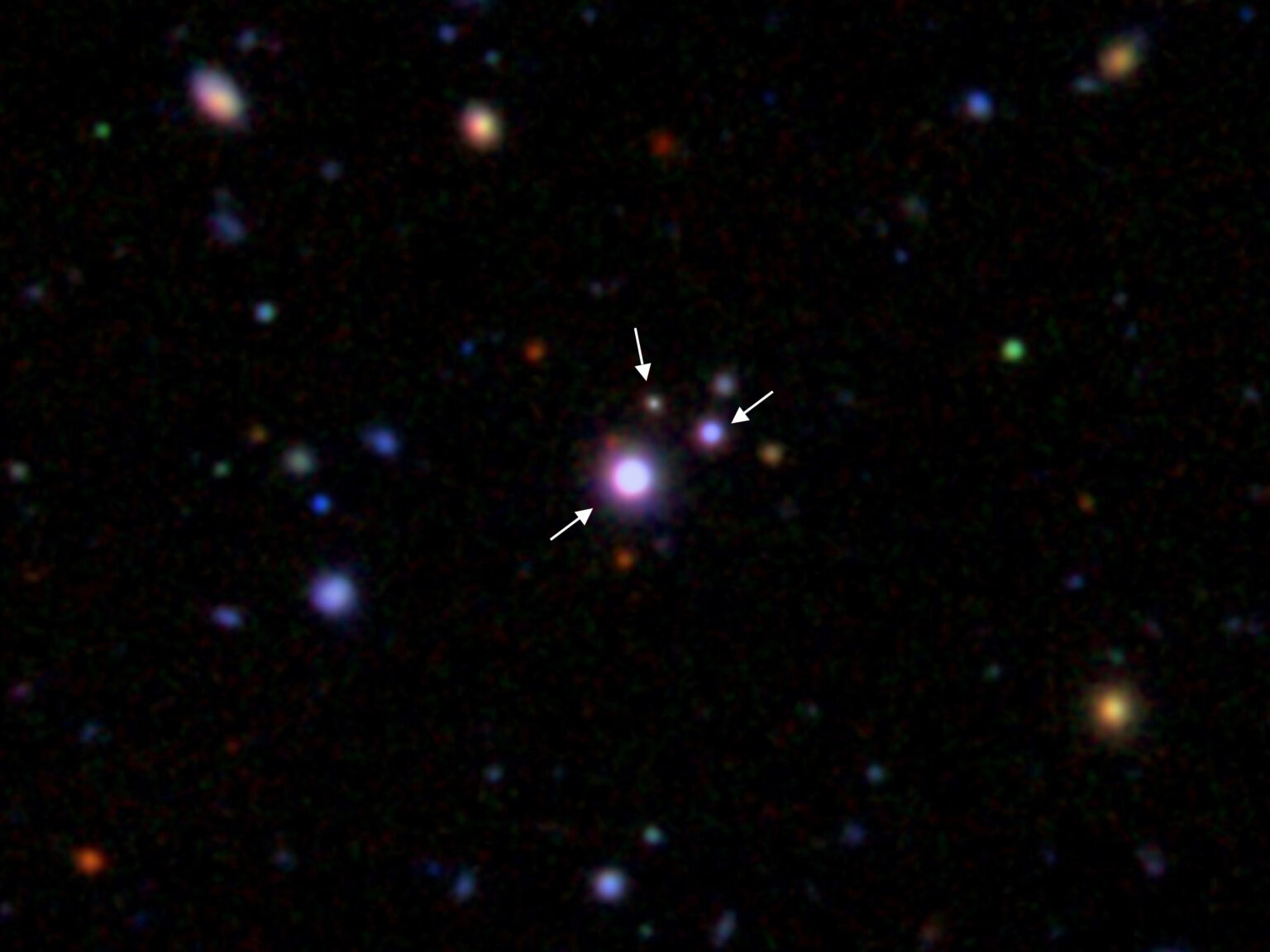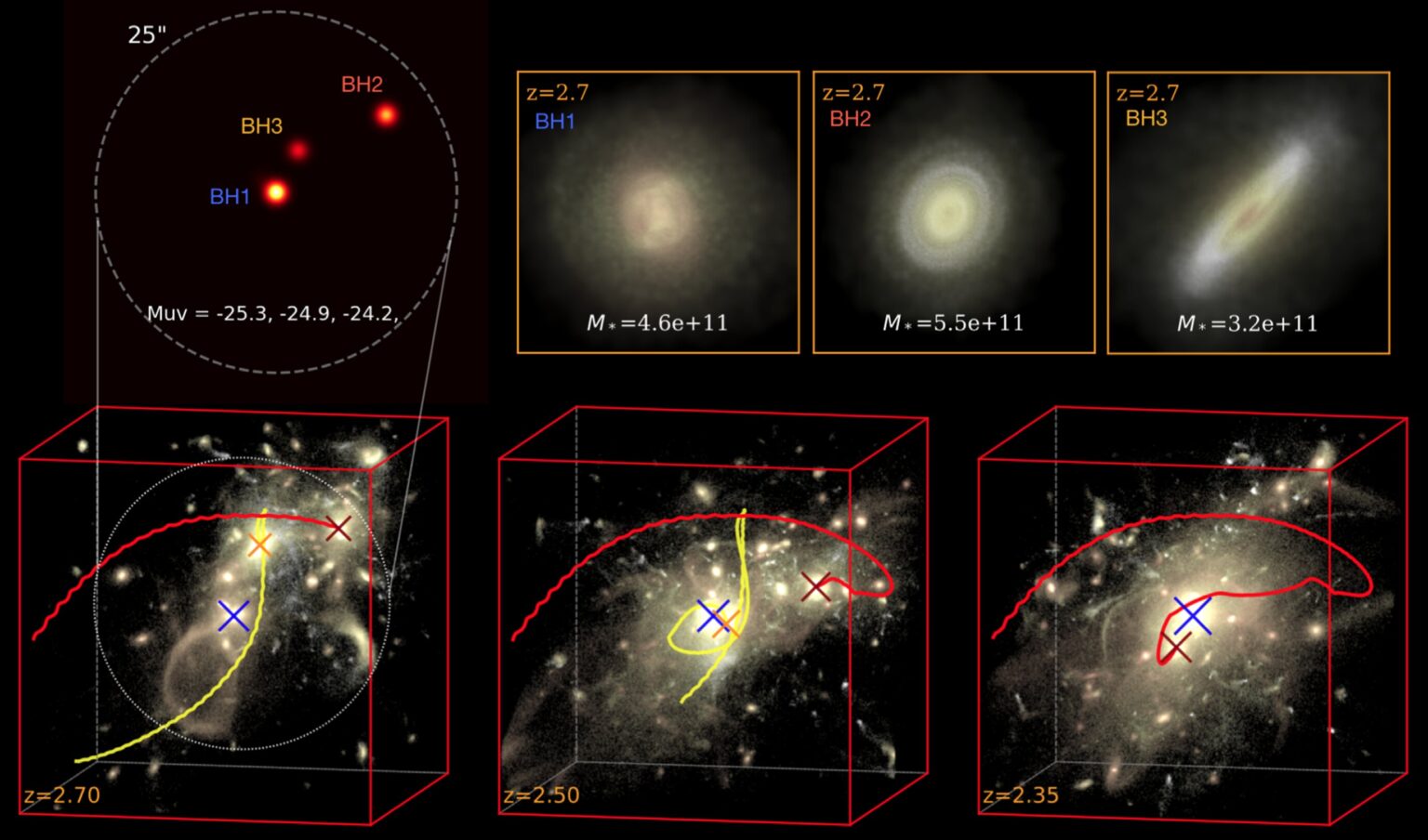Scientists made an assumption about how the largest black holes in the Universe, also called ultramassive, could have formed. Simulations show that these giants with masses of billions of solar masses can be born as a result of the merger of rare triple quasars.

The largest black holes in the Universe
At the center of every large galaxy is a supermassive black hole. The size of these objects is impressive. For example, Sagittarius A* in the center of the Milky Way weighs as much as 4.31 million suns. But at the same time it is relatively small, in other star systems there may be objects tens or hundreds of times larger than it.
Scientists from Harvard University are interested in the question of how the largest of the holes in the centers of galaxies are formed. Their weight can reach 10 billion solar masses, so they are sometimes called ultramassive. As a possible scenario, scientists have proposed the merger of triple quasars.
Ordinary quasars are active galactic nuclei on which a lot of matter falls. Cases when three galaxies simultaneously approach at the closest possible distance and their nuclei turn into quasars are extremely rare. So far, such observations can be counted on the fingers of one hand.
Simulation of quasar merger
the fusion of triple quasars in order to show that black holes can really form from them. Until now, there has often been no capacity for such calculations. But this time, scientists decided to use the powerful Frontera supercomputer at the Texas Center for Advanced Computing.

For the model, called Astrid, we had to use 2048 separate computing nodes. Thanks to this, a very detailed picture of the merger of three star systems was modeled. It showed that during such a triple merger, black holes with a weight of up to 10 billion solar masses can actually form.
At the same time, most of these events, according to scientists, occurred in the so-called “noon of the Universe” about 11 billion years ago. At that time, modern conditions for the formation of stars had already been established, but there was still enough free matter to fuel this process. That’s why about half of all the stars in space formed at this time.
Now scientists hope that further observations will be able to confirm this simulation. For this purpose, it is planned to use all modern orbital and ground-based astronomical instruments.
According to phys.org
Follow us on Twitter to get the most interesting space news in time
https://twitter.com/ust_magazine

